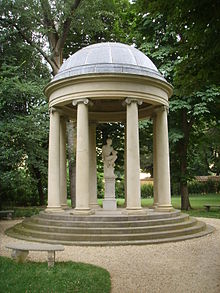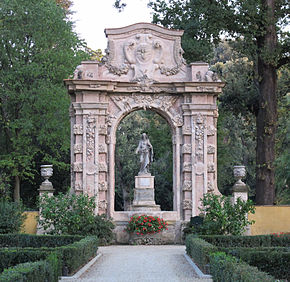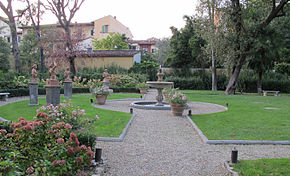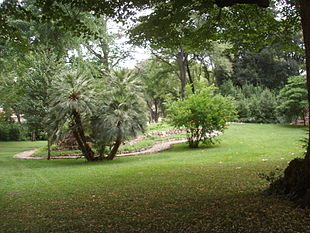
Gherardesca Garden
This post is also available in:
 Italiano (Italian)
Italiano (Italian)
This is the largest private garden and park in the historic centre of Florence, which has undergone a dramatic restoration when a five-star hotel of the Four Seasons chain opened in June 2008.
The garden, which belonged to Friar Durante Chiermontesi, used to house 3.488 exotic plants, orange trees and lemon groves. The extraordinary harvest, however, was the result of illicit gains, since the friar – a salt monger as well – used to cheat when doing business. Eventually, the scam was discovered, he was punished and after his death, the garden was completely destroyed. Later on, this area became part of Bartolomeo Scala palace.
According to several descriptions and drawings of the time, the garden featured a classic layout, with a vegetable area, a nursery and a “ragnaia” (a special grove with nets to capture small birds) – the latter, owned by Arte della Lana, was eventually sold to the Gherardesca family.
In the XVIII century, after the completion of the works on the villa, people began to take an interest in the external space, eliminating the Italian geometric layout (only a small portion was left on the side towards Borgo Pinti), and replacing it with an English garden featuring with paths, bushes, trees planted in groups without any pattern, a pond, two hills, and three small decorative and recreational buildings: a coffee house, an Ionic temple, and a tepidarium (the typical warm bathroom of Roman baths).
Behind the monumental gate by architect Giuseppe Poggi and between two buildings, there is an elegant fountain with a putto against the backdrop of a wooded hill.
This garden was restored according to a XIX century project and is home to rare and endangered botanical species. Among the most important ones, there are yews (Taxus baccata), an evergreen decorative plant known as the longest-lived in Europe, and thujas, aromatic conifers also known as the “trees of life” for their homoeopathic properties.
Furthermore, the first mandarins cultivated in Florence and some precious trees, which are now centuries old, are still visible in the garden, namely a large maple, and a sequoia. The collection of azaleas is just as splendid.
The whole complex was affected by the demolition of the surrounding walls in 1869 and the creation of several avenues. At that time, a monumental entrance to the garden was built on Viale Matteotti, which was taken care of by architect Giuseppe Poggi.
After destruction and neglect during the war period, the garden underwent a masterful restoration by Pietro Porcinai. A further radical renovation was undertaken by Giorgio Galletti and today the structure houses a five-star hotel.
Palazzo Della Gherardesca has been acknowledged by the General Directorate of Antiquities and Fine Arts as a monumental building part of the national artistic heritage, since 1901.
The actual garden, often praised by Italian writers, is enriched with a neoclassical temple designed by Giuseppe Cacialli and a statue of Camillo della Gherardesca by Giovanni Battista Giovannozzi (1813). The “Ionic tepidarium”, designed by Guido Alberto della Gherardesca himself, dates back to 1837.
The west area of the garden, with an Italian design featuring geometric flower beds and a large arch with spongy decorations, was once part of the Capponcina convent building, with an entrance on Via Gino Capponi, which today belongs to the hotel as well.
This post is also available in:
 Italiano (Italian)
Italiano (Italian)
Contatti
Via Borgo Pinti, 97 - Piazzale Donatello, 12 - Firenze(FI)
055 26261 (Four Season Hotel Firenze)



